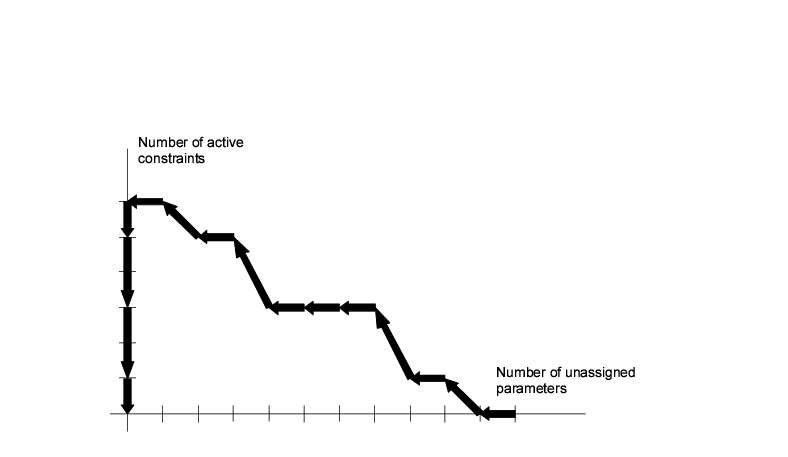
In the next stage this solution can be corrected from more detailed point of view. The designer modifies the rough solution in order to meet all constraints imposed on the solution. This approach enables processing in a hierarchical way where only main parameters are processed during the initialization phase and details of the solution are represented by other parameters which are activated in latter phases of the design. Another advantage of dealing with the whole solution is that the designer has an overview of all violated constraints at the same time. The designer can select the best strategy to remove these violations by the use of available fixes whilst taking into account the priority of violated constraints.
The third phase (which is not mandatory and can be skipped) corresponds to the phase of the smooth sensitive refinement of the solution when both older and newer solution are acceptable. The difference is only in the quality of the solution. This difference must not influence the functionality of the designed artefact. It can represent e.g. lower price or lower complexity of the artefact. This phase is related to the fact that the designer is not interested in any acceptable solution but only in the best one.
These three phases are divided into several interconnected solution steps forming the structure of the CRO strategy.
If there is no need to use either the activation step or the inactivation step (so that the number of active parameters remains the same), typical trajectory in the design state space has the form depicted in the following figure.

The first phase uses only the assignment step. The trajectory travels from its initial point pointing to the left and ends on the y-axis. Since the number of violated constraints increases, the trajectory increases too. During the second phase the trajectory falls down into the origin. The last phase is represented only by the origin because the trajectory does not leave it. If the relaxation step occurs, the decrease of the trajectory can be temporary replaced by its increase. While correcting the violated constraints their number can increase. The reason is that the designer fixes the violated constraint with the highest priority and the correction of this constraint can cause several violations of constraints with lower priority.